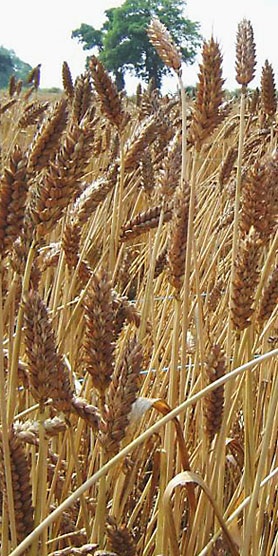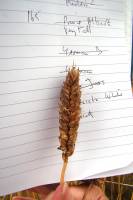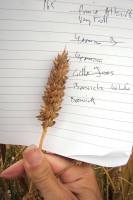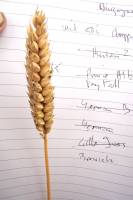 BBA wheat portal
BBA wheat portal
Browickorigin:United Kingdom first record:1844 habit:Winter grain colour:red/brown references >>> |
Browick is a prominent example of the "squarehead" style of early cultivar that came to replace in cultivation earlier landrace millable wheats in the British Isles during the early to mid 19th Century.
The "squarehead" or "prolific" type of English early cultivar characteristically has a square cross section to the ear with close packing of spikelets compared to more spaced out "lax" ear of earlier wheats see Varietal innovation and the competitiveness of the British cereals sector, 1760-1930 . Yield increased due to weight of ear and number of ears but quality decreased and the grain of the "squareheads" is more suitable for animal fodder or biscuit making than milling for bread baking. This reflected changes in English land ownership and agriculture with the progress of "Enclosure", small peasant farmers being forced off "common" land which was then "enclosed" and "improved" by local landlords orientating on stock rearing to feed the emerging urban populations of early industrialization. Coincidentally the bakers and millers of the expanding port cities of the UK started to adopt use of imported grain with its dependable quality control at source in North America, Argentina and Australia.
Note that the correspondent in the North Otago Times relates the discoverer of "Browick", Mr Banham chose the founding plant amongst a crop of Spalding precisely for its finer and squarer ear.
The Victorian period wheat "Prince Albert" was reputedly a selection from within Browick. "Prince Albert" is an important element in the breeding programme of French seed company Vilmorin alongside Chiddam Red and White, for instance "Soma"
As one half of the Cambridge Plant Breeding Institutes second big wheat success "Yeoman" together with the Canadian (originally Polish) wheat Red Fife, Browick is through this important in other late period UK wheats such as "Holdfast" and "Meteor".



